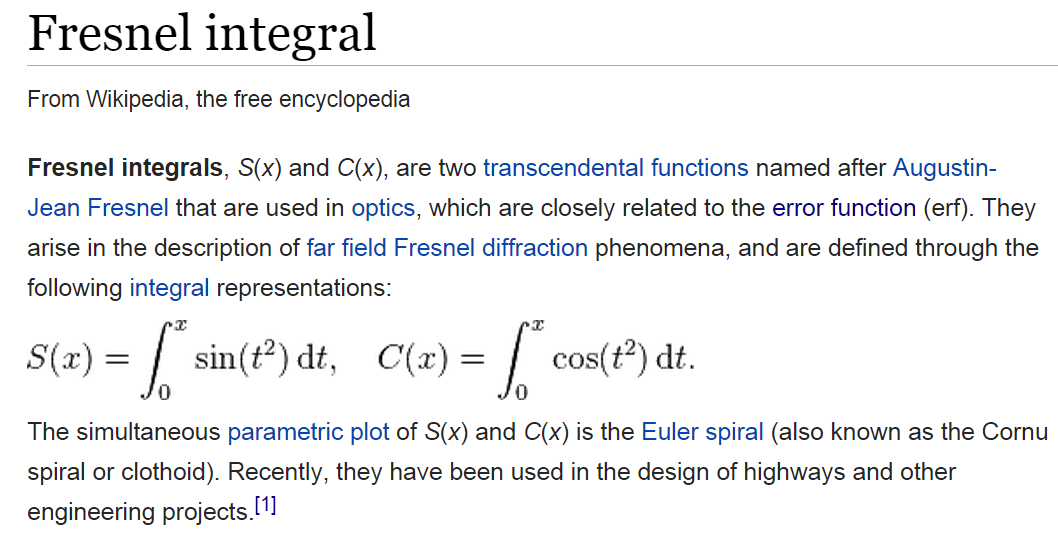Couldn't get any Fresher
∫ 0 ∞ sin ( x 2 ) d x = ?
Details and Assumptions
You can solve this using elementary function.
Check out my calculus set .
The answer is 0.6266.
This section requires Javascript.
You are seeing this because something didn't load right. We suggest you, (a) try
refreshing the page, (b) enabling javascript if it is disabled on your browser and,
finally, (c)
loading the
non-javascript version of this page
. We're sorry about the hassle.
3 solutions
Discussions for this problem are now closed
nice solution :-)
Let x 2 = t , the integral ( I ) becomes:
I = ∫ 0 ∞ 2 t sin t d t
Now we use the fact that:
2 t 1 = ∫ 0 ∞ π 1 e − s 2 t d s
Substituting this back in the original integral gives a double integral:
I = ∫ 0 ∞ sin t ∫ 0 ∞ π 1 e − s 2 t d s d t
or
I = π 1 ∫ 0 ∞ ∫ 0 ∞ sin t e − s 2 t d t d s
We know by laplace transforms that:
∫ 0 ∞ sin t e − s 2 t d t = 1 + s 4 1
Hence:
I = π 1 ∫ 0 ∞ 1 + s 4 1 d s
let s = r 1
I = π 1 ∫ 0 ∞ 1 + r 4 r 2 d r = π 1 ∫ 0 ∞ 1 + s 4 s 2 d s
so
2 I = π 1 ∫ 0 ∞ 1 + s 4 1 + s 2 d s
finally let z = s − s 1
2 I = π 1 ∫ − ∞ ∞ 2 + z 2 1 d z = π 1 2 2 arctan [ 2 z ] − ∞ ∞ = π 1 2 2 π
I = 2 1 π 1 2 2 π = 4 2 π = 0 . 6 2 6 6
how did you think about the second step...please explain the algorithm. It was really nice question....Is this the only method to solve such problems.
It is just experience, I learned it when solving a similar but simpler one:
∫ 0 ∞ x sin x d x
To change to a double integral and using laplace transforms, here I try to express x 1 with an integral which bounds are also 0 and ∞ .

From the above definition, we have: ∫ 0 ∞ s i n t 2 d t = x → ∞ lim S ( x ) = 8 π
In addition, ∫ 0 ∞ c o s t 2 d t = x → ∞ lim C ( x ) = 8 π
From Euler Formula, we have e − i x 2 = c o s ( x 2 ) − i s i n ( x 2 ) So, s i n ( x 2 ) = − I m ( e − i x 2 )
Let, I = ∫ 0 ∞ e − i x 2 d x Now, 4 I 2 = ∫ − ∞ ∞ ∫ − ∞ ∞ e − i ( x 2 + y 2 ) d x d y = ∫ : ∫ e − i ( x 2 + y 2 ) : d A Convert into polar coordinate, 4 I 2 = ∫ 0 ∞ ∫ 0 2 π e − i r 2 r d r d θ = i π Hence, we have, I = 2 1 i π Since ( i ) = e i π / 4 , then I = 2 1 2 π ( 1 − i ) So, we have ∫ 0 ∞ s i n ( x 2 ) d x = − I m ( I ) = 2 1 2 π = 0 . 6 2 7